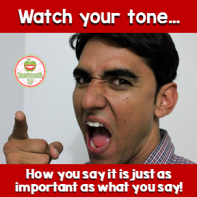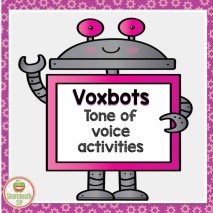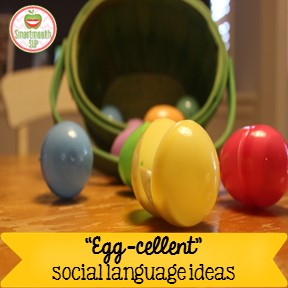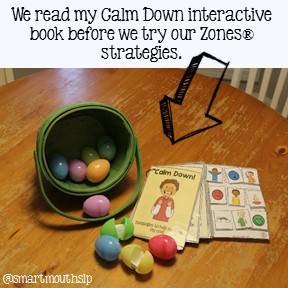
Voice is an area of communication that I have really had to step up my game recently. Many of my students with autism spectrum disorders struggle with the subtleties of understanding that it’s not just the words they say, but how they say them, that convey meaning. I love using videos to teach many social concepts and tone of voice is one of these areas, but I also needed some step by step materials to explain the why of this skill. Have you had any friends that speak like a robot or a cartoon character, or use a loud, angry tone of voice all the time (even when they weren’t mad)? Me too!
I ended up making what I needed after looking around for months, and voila’, Voxbots (get it?) was born and you can find it in my TPT store! I tend to be a linear thinker and know that my kids need to understand the steps and the why before we can practice and start to change these skills. I begin with teaching cards to describe each clue we need to consider, in order to determine the right tone of voice. These clues include matching emotion to words, reading body language and facial expressions, determining the right place, time and people, and adjusting our volume, speed and inflection. It always amazes me when I break down a skill, how complex each one is and how neurotypical brains work effortlessly when we communicate. It also helps me understand and empathize at how hard these skills are for my students with social language deficits!
I then have task cards for each of the clue areas to practice the skills. After we get the instructional understanding down in therapy, I give homework using a checklist of what to look for. I ask them to observe the clues in real time at home, across people and settings. We also use video clips to look for the clues and to see if the tone of voice matches what is going on in the movie or commercial (you can look through my Pinterest board for social video clips HERE ). Using an ipad or iphone to record the students is another great idea to generalize the skill. My students often have the most difficult time watching themselves, so I save this practice until last. Remember, social communication in real time is a very fast moving, complex skill for all of us. This is not a once and done lesson. You may scaffold the skills over several weeks and then re-visit them throughout the year in therapy to probe for generalization or to see where the kids are missing clues. You can even create a bulletin board with their Voxbots as a visual cue in the classroom or send them home as a reminder for carryover.
How do you teach tone of voice skills in therapy? Share here!



